TEN RACES WE’D LIKE TO EXPERIENCE AGAIN, PART 2
In this five-part series, CompetitionPlus.com will explore ten races that were really great at one time, and some were famous, while others were obscure. The bottom line is they were fun and epitomized the spirit of drag racing.
We will undoubtedly miss a few, but save your judgment until the series ends. Special thanks to Bret Kepner, Dave Wallace, Steve Earwood, and others who helped ensure this series came to fruition with their knowledge of the sport and willingness to contribute.
THE NHRA SUPERNATIONALS/WORLD FINALS - Ontario, Ca.
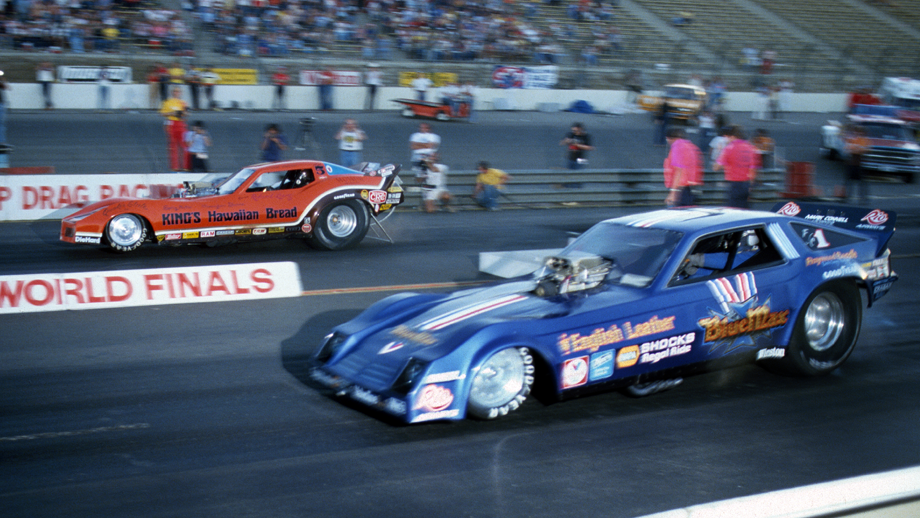
 Maybe this isn’t so much of a race we miss as it is a longing to have another event at the long-gone Ontario Motor Speedway. If zMAX Dragway, built on the hallowed grounds of Charlotte Motor Speedway, is considered The Bellagio, the track in Ontario, Ca., could be considered The Venetian.
Maybe this isn’t so much of a race we miss as it is a longing to have another event at the long-gone Ontario Motor Speedway. If zMAX Dragway, built on the hallowed grounds of Charlotte Motor Speedway, is considered The Bellagio, the track in Ontario, Ca., could be considered The Venetian.
The Ontario Motor Speedway first entered the NHRA sphere as part of the 1970 Super Season with a non-points-earning event sponsored by Hot Wheels, the famous Mattel brand. The groundbreaking 1970 Supernationals was broadcast live on national television. The television couldn’t do justice to all the other “stuff” the Supernationals offered courtesy of its host, the $25.5 million Ontario Motor Speedway.
The professional competitors worked in their own individual garages. Because of the massive size of the facility, there were Disneyland-type shuttle buses, taking spectators on motorized strips through the pits. There was also a restaurant overlooking the strip, where one could dine fashionably while watching the races. Oh yeah, and there was a drag race going on.
 The Supernationals became the place where drag racers came to establish records and fans came to watch them, all on a strip of asphalt also used as a pit road lane for the oval track. This didn’t come until the 1972 event when the NHRA staged the event as an all-professional show. Mike Snively powered “Diamond Jim” Annin’s dragster to the first-ever five-second elapsed time, and “Big Jim” Dunn drove a rear-engined Funny Car to its only win. While Snively made history, Don Moody left with a record 5.91 elapsed time. Bill Jenkins won Pro Stock, beating the newcomer Bob Glidden.
The Supernationals became the place where drag racers came to establish records and fans came to watch them, all on a strip of asphalt also used as a pit road lane for the oval track. This didn’t come until the 1972 event when the NHRA staged the event as an all-professional show. Mike Snively powered “Diamond Jim” Annin’s dragster to the first-ever five-second elapsed time, and “Big Jim” Dunn drove a rear-engined Funny Car to its only win. While Snively made history, Don Moody left with a record 5.91 elapsed time. Bill Jenkins won Pro Stock, beating the newcomer Bob Glidden.
The NHRA retained the all-pro show in 1973, resulting in 60, yes 60, Top Fuel entries and 40 Funny Cars. The event resulted in the quickest and fastest runs in both fuel categories. A year after Top Fuel broke into the five-second zone, Garlits ran a 5.81.

The facility was more than breathtaking, as drag racing historian Kepner noted.
“I was lucky enough to have gone, and there never has, nor never will be, a drag strip like that,” Kepner said. “It was just surreal. There aren’t enough adjectives to accurately describe that place. It was just, I mean, the whole story of Ontario; it was surreal. That place should have never been built. It was an auto racing facility times a million. When that place opened its doors, there was no way that it wouldn’t go bankrupt in a year. And that’s exactly what happened. It went bankrupt several times.”
The Supernationals morphed into the World Finals championship event in 1974, and those who attended understood, like many big-money tickets in drag racing, were unsustainable financially. Even the most seasoned drag racing entities like Kepner still get giddy when talking about the place.
“The facility was... mind-boggling doesn’t even cover what that place was like,” Kepner explained. “That tower at the finish line of the drag strip, the media tower above the grandstands, was so high in the air it was like watching ants go down the drag strip. It was just monstrous. I have no idea what the actual altitude of the media room was, but it was astounding. You could go outside the press room on a huge balcony around the entire facility, lean on the balcony’s edge, and watch the races. It was just incredible.”
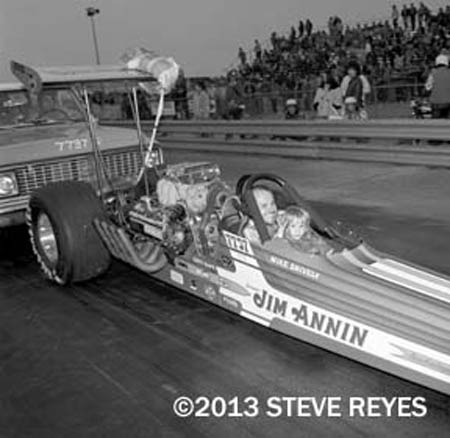
The racers looked at the place with the same feeling even though they did a burnout facing the grandstands in the first couple of events and turned left to go to the starting line.
The OMS facility was built with a 2.5-mile oval and, at the time, a groundbreaking part of racing architecture - a tunnel. When you came out on the other side of the tunnel, there were multiple large metal doors with a sign proclaiming, “Behind these doors is the most powerful public address system ever built by man.”
The NHRA raced there once a year, and interestingly, only three months away from the Pomona season-opener in the same market.
“Los Angeles was a big enough market to handle it,” Kepner said. “Ontario drew good crowds for a drag race. It just was a drop in the bucket to what it needed to stay open because of the size of the facility. And the IndyCar and NASCAR races never came close to making enough money to keep that place open. That was what the real draw was.”
Ironically, the largest crowd OMS ever drew was a California Jam rock concert, in which many tracks had those mid-70s rock festivals that bailed them out.
Interestingly, the Supernationals was always a promotional success, considering NHRA never began the event promotions until after the World Finals.
OMS closed after the 1980 season, just a decade after it produced one of the most extraordinary drag race events ever.
THE “ALL-DRAGSTER” PDA EVENT OF 1967
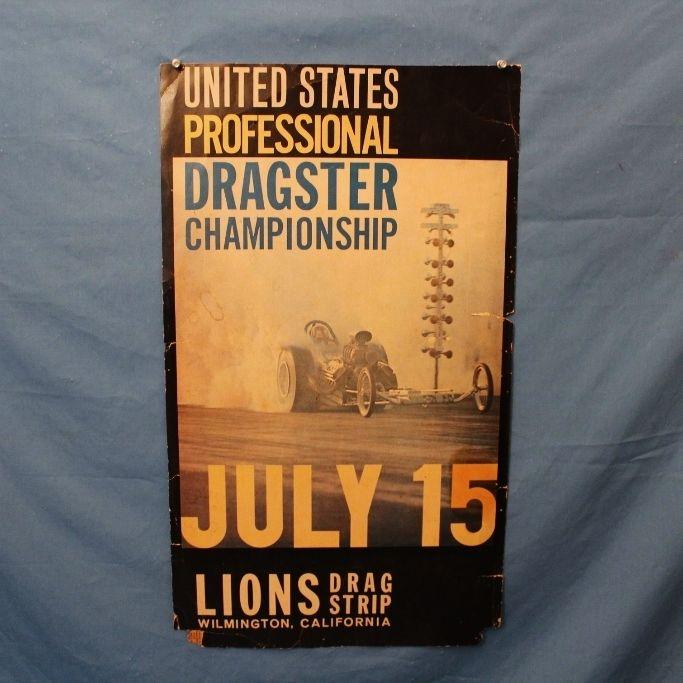 The moment you paid your $5 general admission (not including a $2 pit pass) and rolled through the gates at Lion’s Drag Strip, you immediately heard the theme from Mission Impossible start playing.
The moment you paid your $5 general admission (not including a $2 pit pass) and rolled through the gates at Lion’s Drag Strip, you immediately heard the theme from Mission Impossible start playing.
It was the first race for the newly-formed Professional Dragster Association [PDA] and its promoter, Doug Kruse, also an accomplished builder of dragster bodies.
Essentially, 94 dragsters showed up for a one-day 64-car field race of Top Fuel dragsters. They qualified for the event, ran six rounds of competition, and finished at 4 AM.
“That was the most effective racer [event] I ever witnessed,” Hall of Fame drag racing journalist Dave Wallace confirmed. “The racers wanted bigger purses, so Kruse, who was a rabble-rouser, very smart guy, and educated, created the first PDA meet.”
The consensus was the dragster racers felt like they could put on a show, along with Top Gas and Jr. Fuel, and didn’t need the newfound darlings of the sport, Funny Cars, to fill the stands.
“They also had 32-car Top Gas and Junior Fuelers, so you can figure what a cluster that whole deal was,” Wallace added. “But it still delivered a great show.”
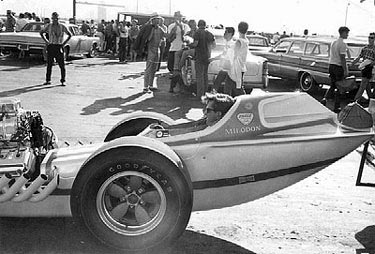 Logistically, how can a race with this many cars complete qualifying and six rounds of eliminations in one day?
Logistically, how can a race with this many cars complete qualifying and six rounds of eliminations in one day?
“Burnouts were not part of the equation,” Wallace added. “The burnouts really slowed the shows down. So in ’67, the dragsters weren’t doing burnouts. You could have two on the line, two pushing down and two waiting to run. You can have six cars fired at all times, sometimes eight. As soon as they staged and cleared the finish line, they’d clear the clocks, and the next cars would stage. The burnouts really messed up the show.
“That’s why San Fernando could have a three-hour show, a Top Fuel and Top Gas show, a Comp type show, they called Little Eliminator. You couldn’t do that in three hours, qualifying and eliminations with burnouts. That was the way we grew up. Everybody did in the fifties and sixties, the burnouts really, once the dragsters started doing burnouts, it took a while. It really slowed the show down.”
Additionally, according to noted drag racing historian Bret Kepner, there was only one two-hour qualifying session, where it was rare if a dragster got more than one qualifying run. In those days of drag racing, there weren’t set times and sessions for qualifying. A racer could get in as many runs as they wanted as long as they could get the maintenance done and come around for another run.
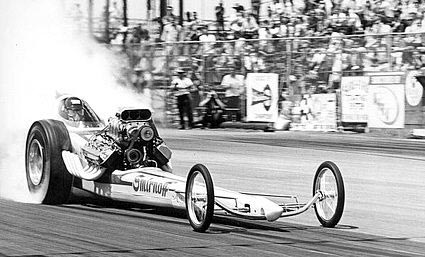 “It was a great race, but it did not stop the onslaught of the Funny Cars,” Kepner added.
“It was a great race, but it did not stop the onslaught of the Funny Cars,” Kepner added.
The dragster-only format lasted one year before Funny Cars were added to the show during the 1968 running. But by this time, drag racing had begun to evolve, and by 1969, burnouts had entered into the equation.
Eventually, Kruse sold out the PDA, which was quickly scooped up by promoter extraordinaire Bill Doner, who gave the events status at his various tracks up and down the West Coast. The PDA was essentially just a name with no real power behind it. In other words, it was just three letters.
As Wallace saw it, the most significant thing Doner brought to the PDA was pizazz.
“Doner brought a lot of promotion to it, a lot of pizazz, and brought it to Orange County Raceway, which was a much nicer facility than Lions,” Wallace said. “People don’t realize that Lions was a real basic facility. It was the greatest drag strip ever, but it was a very basic industrial kind of site where Orange County was really trick.”
As much pizazz as Doner brought, nothing he or the ever-changing drag racing world could do would ever bring back the magic of that first event.
THE COMPLETE LIST
1 - THE NHRA SUMMERNATIONALS, Englishtown, NJ

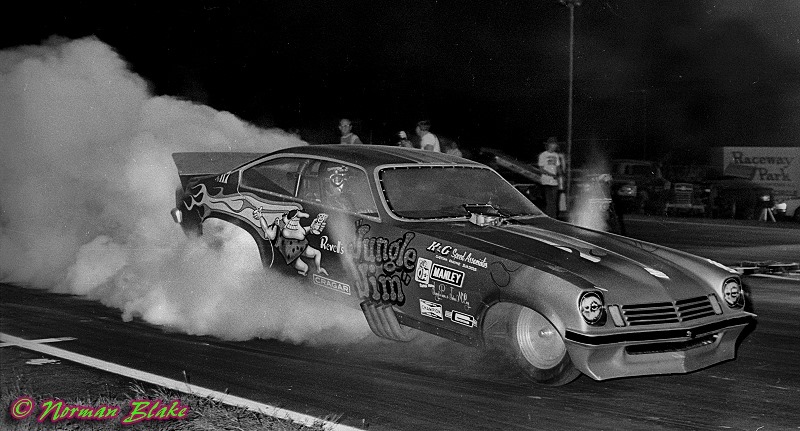 It was hotter than all get-out at the Englishtown NHRA Summernationals; the humidity was so thick it was like sludge, and the race fans sometimes seemed drunk and belligerent. But, it was some of the best drag racing memories to behold.
It was hotter than all get-out at the Englishtown NHRA Summernationals; the humidity was so thick it was like sludge, and the race fans sometimes seemed drunk and belligerent. But, it was some of the best drag racing memories to behold.
During downtime, there would be chants of “the other side sucks” and maybe even a mooning or five. When NHRA expanded its schedule to 24 races, there were times when one could close their eyes, listen to the sounds, and not immediately know where they were. In Englishtown, you knew exactly where you were.
“Every track has a personality, and Englishtown had a very strong one, no question about it,” noted drag racing historian Bret Kepner added.
The Summernationals was staged at other NHRA tracks, and Raceway Park ran other events on the NHRA tour. But this event, when partnered with the Napp Family’s neighborhood facility, produced some of the best entertainment in drag racing.
The Summernationals entered the tour in 1970 as part of the NHRA’s Super Season initiative and ran at York’s U.S. 30 Dragway in Pennsylvania for just one season.
“York was a good race, but York also couldn’t handle very much of a crowd,” Kepner said. “Maybe the place seated maybe six or 7,000, which was one of the biggest at the time. No question about it.”
Raceway Park in Englishtown, which had run the 1968 NHRA Springnationals, returned to the tour in 1971; after spending two seasons improving, the facility remained on tour until 1992, when the track’s event was moved to May and renamed a sponsored Nationals.
 The Summernationals triumphantly returned in 2013 until the last NHRA race was run there in 2017.
The Summernationals triumphantly returned in 2013 until the last NHRA race was run there in 2017.
“When we thought of the Summernationals, we didn’t think of the event name; we thought of Englishtown,” said Top Fuel racer Antron Brown, who grew up at the track. “That’s where it all went down.”
“For me, Englishtown Raceway Park was always the Summernationals,” NHRA Funny Car champion Ron Capps said. “The cool part to me is what happened in the history there. Looking back on some of the coolest experiences, as a kid in California, happened there.”
Indeed, there was the first husband and wife championship final between Judy and Dave Boertman. There was “Jungle Jim” Liberman’s first national event win, Frank Iaconio beating the seemingly unbeatable Glidden in the 1979 race, and the event favorites Don “The Snake” Prudhomme and Shirley “Cha Cha” Muldowney pulling down event wins. John Force reached his second career final round at the 1979 event.
Of course, there were the commercials with the fast-forward sound of Raceway Park!
 “Englishtown was a state of mind,” wrote drag racing fan David Hapgood for DragList.com. “To understand this better, you’d have to rewind the clock about forty years. What was it like to visit Englishtown back in the day? For starters, unless you lived near the track, it involved a trip into the NYC metropolitan area, the most densely populated region in North America. Inevitably, this meant a nice drive on the New Jersey Turnpike, a writhing mass of multi-laned asphalt that snaked through the center of the state.
“Englishtown was a state of mind,” wrote drag racing fan David Hapgood for DragList.com. “To understand this better, you’d have to rewind the clock about forty years. What was it like to visit Englishtown back in the day? For starters, unless you lived near the track, it involved a trip into the NYC metropolitan area, the most densely populated region in North America. Inevitably, this meant a nice drive on the New Jersey Turnpike, a writhing mass of multi-laned asphalt that snaked through the center of the state.
“If you were coming from the north, you were driving in NYC traffic; from the south, you were in Philadelphia traffic. And if you were paying close attention, you might spot the Berserko Bob sticker that some race fan had stuck on one of the toll booths. In any case, the turnpike was the portal that transported you into what was then the semi-rural world of central New Jersey. But your destination that day wasn’t Old Bridge Township Raceway Park, as nobody called it that. It was known simply as Englishtown or E-Town, ground zero for drag racing on the eastern seaboard.”
The Englishtown facility was often used in feature films, most notably Heart Like A Wheel and the lesser-known Wheels of Fire, and this was no double credited to the facility’s Summernationals legend.
On January 16, 2018, the facility officially notified the NHRA it would no longer be hosting any drag racing events, effectively ending the run of the iconic event in New Jersey just shy of its 49th annual Summernationals.

6 - ANY OF THE SHUFFLETOWN DRAGWAY PRE-PRO MOD QUICK EIGHT EVENTS
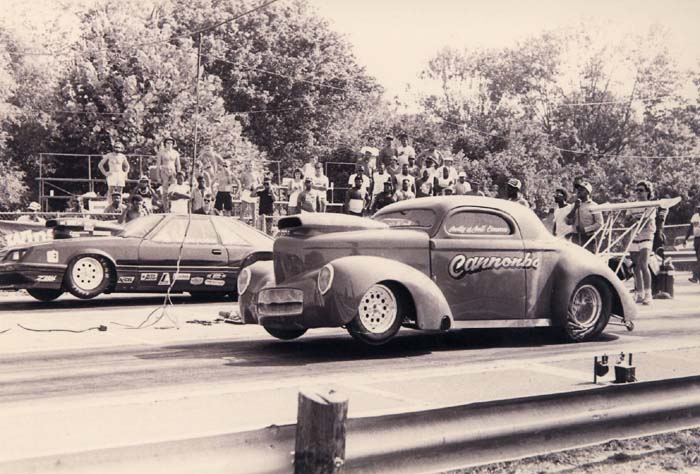 Shuffletown Dragway, the eighth-mile strip located outside of Charlotte, NC, was not the first place to run a Quick Eight event of what would have been the future Pro Modifieds. That honor belonged to Orangeburg Dragway in the lower part of South Carolina.
Shuffletown Dragway, the eighth-mile strip located outside of Charlotte, NC, was not the first place to run a Quick Eight event of what would have been the future Pro Modifieds. That honor belonged to Orangeburg Dragway in the lower part of South Carolina.
But just like Chick-fil-A, who didn’t invent the chicken sandwich but perfected it, Shuffletown didn’t create the format of running volatile doorslammers but they indeed perfected it.
Clinton Mashburn, the track’s promoter, had plenty of fast cars running at his track, now a dog park off of I-385. He had the cream of the crop for fast doorslammers, who had abandoned their Modified Eliminator roots for fast bracket racing in IHRA’s Top Sportsman. On any given Sunday afternoon, a drag racing fan could see future legends such as Charles Carpenter, Blake Wiggins, Michael Martin, Tommy Mauney, Walter Henry, and even Scotty Cannon racing Super Pro.
When venues such as the Orangeburg strip began to book them for match racing and later upped the ante to a well-funded Quick Eight, running these “bracket” cars heads-up, with no breakout, became Mashburn’s mission. Though these other venues often paid more, Shuffletown Dragway was a home track to many of these racers, and for them, there was no place like home.
“I remember those days,” said six-time champion Scotty Cannon. “We were just excited that we didn’t have to race with a dial-in on the car. There was no thinking that one day we were laying the foundation for a professional class. Honestly, we couldn’t have even thought that big. Honestly, we were more concerned with trying to make it to the finish line in one piece without running over someone.”
During the 1987 - 1989 years at Shuffletown, there were times when almost as much money changed hands trackside as on the New Stock Exchange. These events brought in the outlaw and the high-end Top Sportsman cars. Outlaws such as the Gaffney Brothers and their ultra-quick 1968 Nova, driven by Sonny Tindal and Thomas Jackson, piloting his ex-Rickie Smith Mustang Pro Stocker, were able to line up against Ed Hoover and Wiggins in these events.
“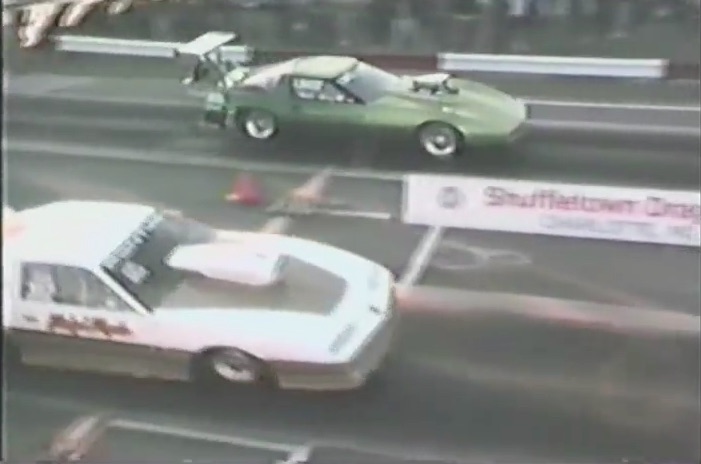 We were excited because we had somewhere to race, but later our excitement just to race in a show like that faded away to show us the reality these tracks weren’t the safest ones to be racing on,” said Carpenter, who began racing at the track in a Modified car, the same one he’d bolt in a large-displacement engine with nitrous and run in the sevens.
We were excited because we had somewhere to race, but later our excitement just to race in a show like that faded away to show us the reality these tracks weren’t the safest ones to be racing on,” said Carpenter, who began racing at the track in a Modified car, the same one he’d bolt in a large-displacement engine with nitrous and run in the sevens.
“But yeah, it was definitely a big show back in those days. There was lots of money changing hands, and those who had the money didn’t mind showing you as you rolled up there to stage.”
Doug Mashburn was the youngest of Mashburn’s three sons and worked full-time at the track during this era.
“When Dad started running the Quick Eight events, he really had no clue what it would do to hold a place in drag racing history,” Mashburn said. “He just knew he had a bunch of fast cars in the pits. He wanted to race them against one another. It started out as a once-a-month thing, and then it went every other month and just blew up from there.
“Dad was tight on his money, and he just wanted to make a dollar. The entire track prep budget was six gallons of VHT that he bought from [announcer] Larry Wright. We’d spread it out to about 60 feet, and that was it. It was a once-a-day thing. Even then, he’d fuss a little about the cost of the VHT.
“It was really no-prep racing, but it turned into something big and special. We had no idea; it just happened. There’d be so many people there that you’d really have to search for somewhere to sit down to watch it all.”
Once Pro Modified became an official Pro Modified class, these events faded away, and in 1991, the track closed due to noise ordinances. The track had been in operation since 1957.








































